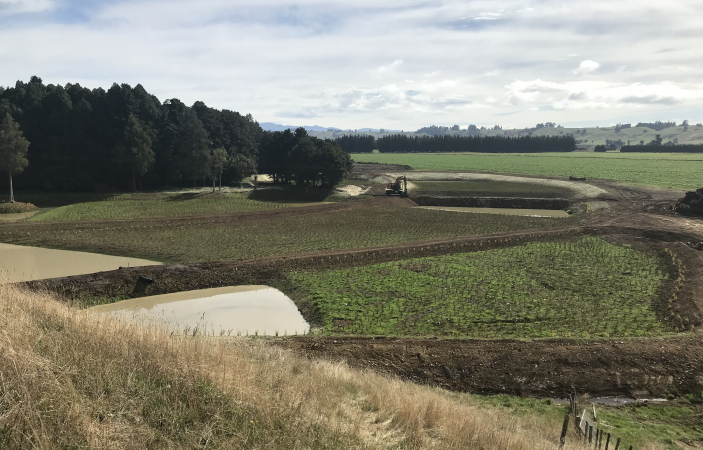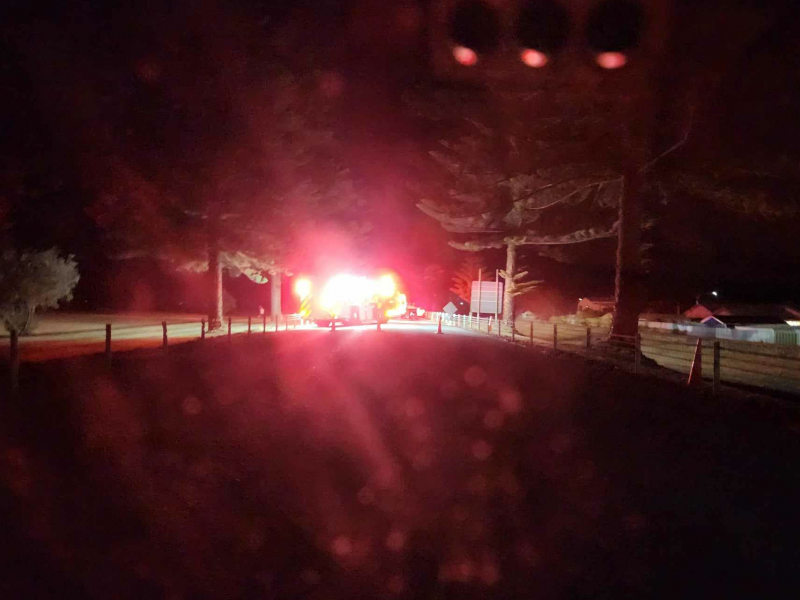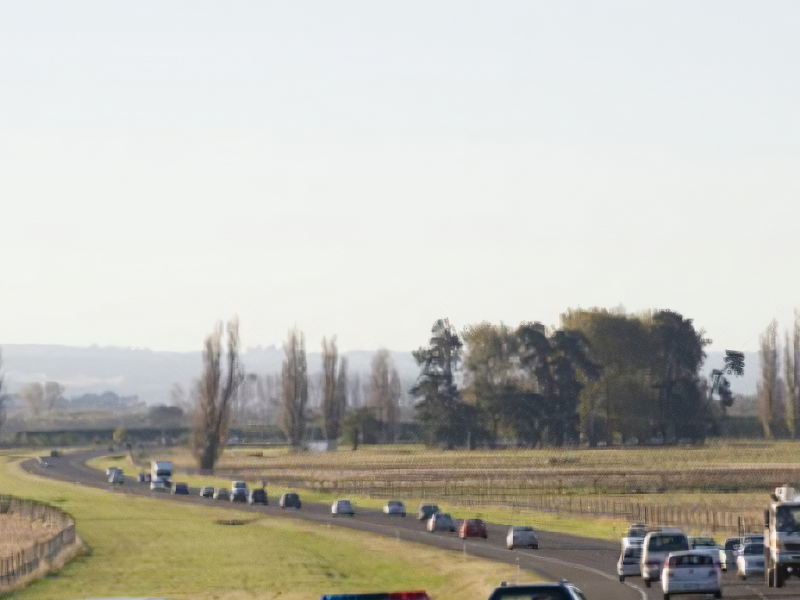Large wetland being constructed in Tukipo, Central Hawke's Bay
A large wetland is being constructed in Tukipo, Central Hawke’s Bay to investigate how wetlands can be used to remove nitrogen and other contaminants from farm run-off and improve the health of surrounding waterways.
The Hawke’s Bay Regional Council is working in partnership with the National Institute of Water and Atmospheric Research (NIWA), Fonterra and the Tukipo Catchment Group to build the 1.6 hectare wetland, which is being planted with 24,000 native wetland and riparian plants.
The wetland has cost $350,000 to build, including a $250,000 contribution from Fonterra and $100,000 from the Regional Council. It is being constructed on a property owned by the White family in Ashley Clinton.
Regional Council freshwater scientist Dr Andy Hicks says the project is a positive example of the benefits of working together to achieve great outcomes for the environment.
“The establishment of the wetland will be of significant value to the wider Tukipo catchment with strong water quality and biodiversity benefits.
This wetland will capture and treat water from around 180 hectares of the catchment. The wetland works by bacteria in the wetland soils converting nitrate from farm run-off and leaching into nitrogen gas, ultimately improving water quality,” he says.
The Regional Council’s Tukituki Catchment Plan has set ambitious nitrogen targets for landowners, including in some cases, for nitrogen rates in waterways to be more than halved.
“We think that constructed wetlands may form a key part of the response in the Tukituki catchment and we hope that this project will provide a model around how we can target nitrogen reduction throughout the region,” says Dr Hicks.
Landowner Willie White says the family welcomed the wetland as the land where it is being built is not highly productive and is well suited to wetland restoration. It is next to Barnsdale Bush, a seven-hectare remnant of native bush, including a magnificent stand of kahikatea.
“We hope this bush will benefit from the enhanced biodiversity and the slowing down of the water flow through the wetland after it leaves the bush. It’s great to be part of a wider project assessing the benefits of wetlands for farmers, and the wetland is aesthetically pleasing and will attract birdlife.”
NIWA is working with the Regional Council, several other councils across the country, DairyNZ and Beef+LambNZ to design, implement, and evaluate constructed wetlands for reducing contaminant concentrations and loads from pastoral runoff.
The Tukipo constructed wetland is one of the six demonstration sites embedded within its Sustainable Land Management and Climate Change Research Programme funded by the Ministry of Primary Industries from 2021-2024.
Principal Scientist Chris Tanner says NIWA will be assisting the Regional Council with continuous water quality monitoring in the wetland to see how effective it will be in reducing nutrients, sediment, and faecal microbes.
“This wetland will provide critical real-world information for developing national guidelines for farmers and adding modules to the Overseer nutrient budgeting models so constructed wetlands can be used more widely to clean up farm run-off.”
Colin Tyler, chair of the Tukipo Catchment Care Group, is pleased to see the project nearing completion.
"Credit and thanks must go to the White family, who have been such huge supporters of the catchment, our targets and the community as a whole.
It has also been terrific to have a collaboration with Fonterra, NIWA and the Regional Council working together to achieve fantastic outcomes for our freshwater improvement goals."
Fonterra's head of farm source, Central Districts Jason Boyle says it’s great to see the collaboration happening in the Tukipo catchment.
“Our farmers are making significant environmental gains improving management practices on farm, but having additional proven tools like constructed wetlands to help reduce nitrogen levels in catchments will enable communities to accelerate progress.
I’m also excited about these types of natural mitigation solutions as they contribute to regenerating catchments and helping achieve New Zealand’s biodiversity outcomes,” says Mr Boyle.

























